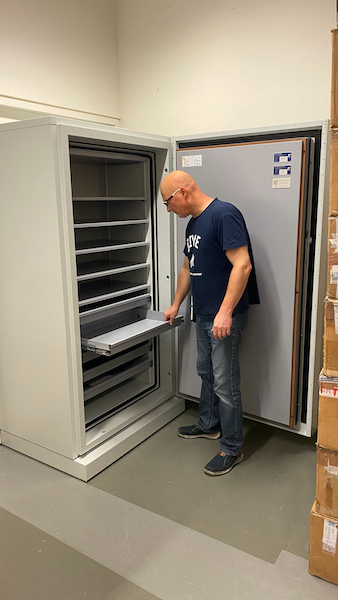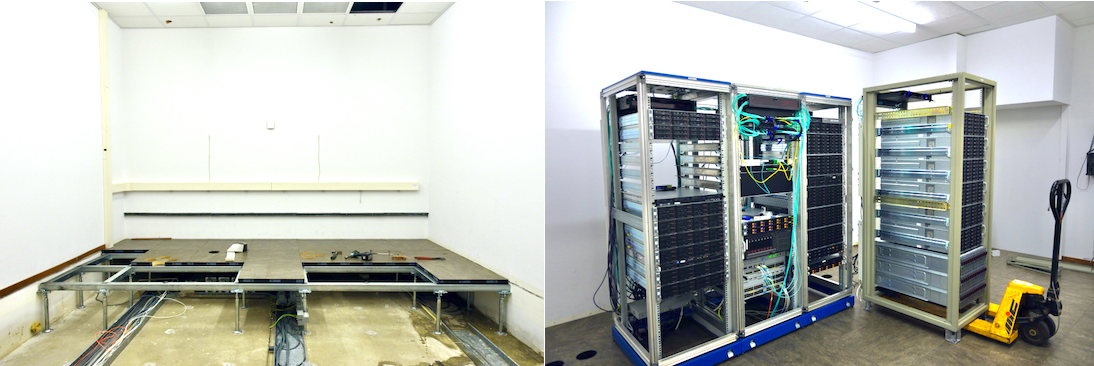
Hardware updates at JIVE
by Marjolein Verkouter (Joint Institute for VLBI ERIC, the Netherlands), Paul Boven (Joint Institute for VLBI ERIC, the Netherlands) and Martin Leeuwinga (Joint Institute for VLBI ERIC, the Netherlands).

JIVE. Credit: Marjolein Verkouter.
JIVE’s core business is supporting the European VLBI Network (EVN). One of those core businesses is the archiving of the correlated data sets that are created from observations carried out by the participating stations. Production correlation started at the end of 1999 and we have been backing up all those observations and other important data to magnetic tapes (DATs and LTOn), to safeguard the EVN science output from computer mishaps.
Due to lack of resources these tapes have no duplicates (for your peace of mind: the archive itself has an on-line but off-site copy as well as a tape backup.) so they themselves become a point-of-failure should a restore from destruction, such as the building burning down, become necessary. In order to make sure these irreplaceable tapes are safeguarded against heat and water JIVE ordered a fire-proof safe of the highest quality (EN 1047-1 S120 DIS for those who would like to know) to be installed. This qualification guarantees protection of heat-sensitive media for up to two hours from an 1,100°C fire, water, and a drop of 5m. Figure 1 shows JIVE’s own Martin Leeuwinga with the safe for a sense of scale of the vault. Rest assured that your valuable historical EVN data is now as safely protected as is practically possible.
Another important core business of JIVE is buffering the raw observation data from the stations and correlating it. The EVN Consortium Board of Directors have agreed that the array should work towards an increase of the nominal observed bandwidth. A direct consequence of that is an increase in the number of bits having to be stored at JIVE. Even though individual bits currently only weigh 37 picogram, multiplying that by the increased EVN session’s number of bits it meant a noticeable increase in weight to be carried by the raised computer floor in the JIVE correlator room where our FlexBuff storage systems are located. To safeguard the raised floor from collapsing under the increased amount of storage systems and allow for future expansion of the correlator equipment, the correlator room was stripped completely and a new, reinforced and rated for up to 20 kN m-2, raised floor was installed. Given that all JIVE’s core services are run from equipment in that room this meant that for several days production correlation was impossible; all equipment was shut down, disconnected, removed from the room and, after the new floor was installed (which only took half a day!), put back and reconnected. The occasion was also used to change the orientation of the racks to allow more cabinets to be placed in the room than previously and at the same time improve the cooling flow. All equipment except a single redundant power supply survived the operation unscathed. All in all JIVE suffered five days of correlator and e-shipping downtime but essential services such as Mattermost, databases and some webservices remained running, except for two short moments of interrupted service. The operation was exceptionally well planned, prepared and executed by Paul Boven and Martin Leeuwinga; congratulations on a job well done! Figure 2 show the reinforced raised floor under construction (note the size of the supporting beams) and the racks being put in their new position.
